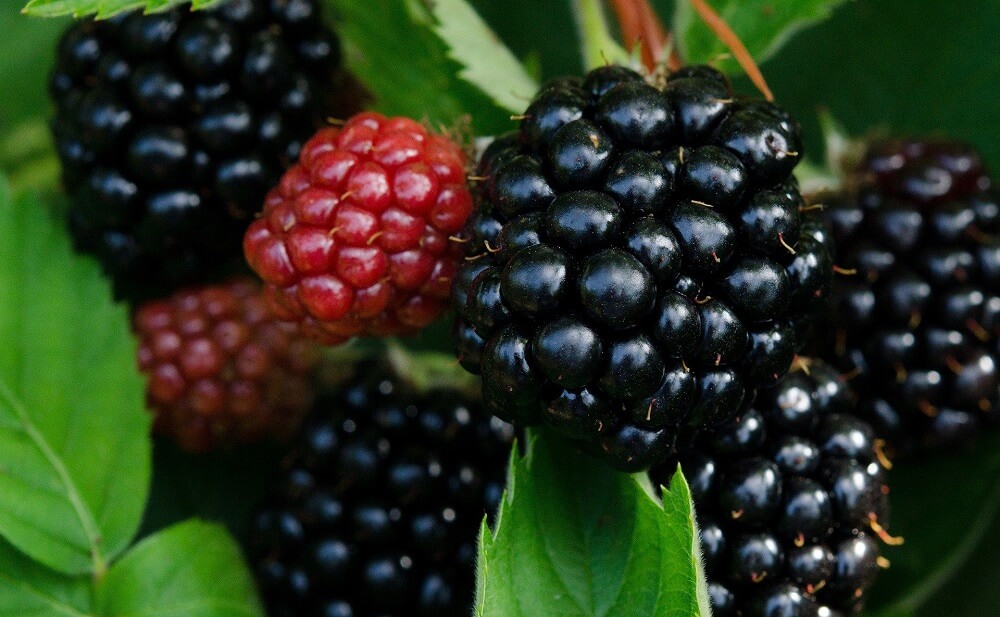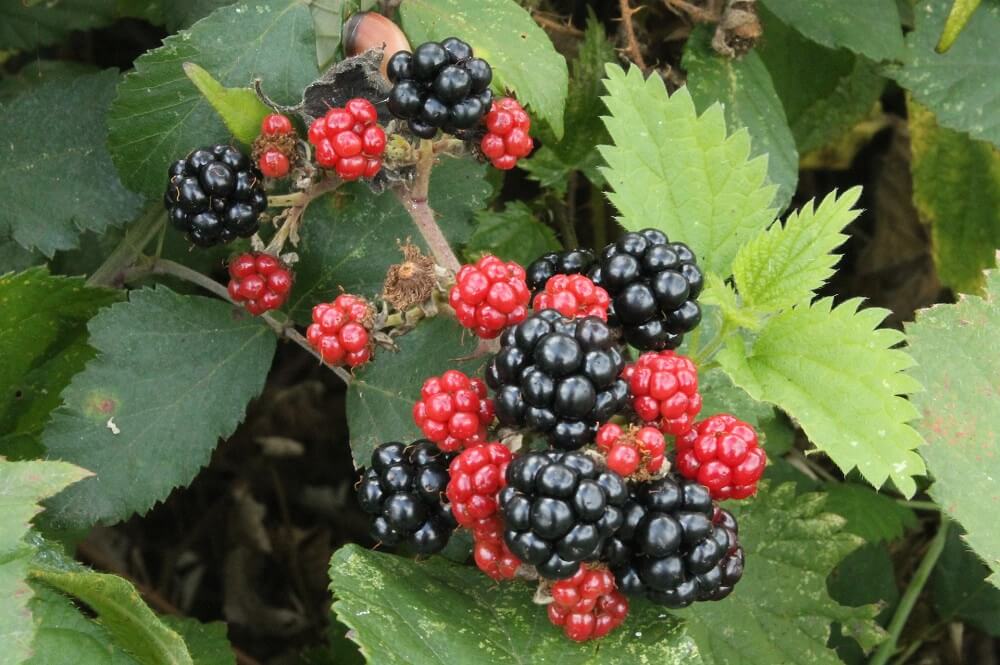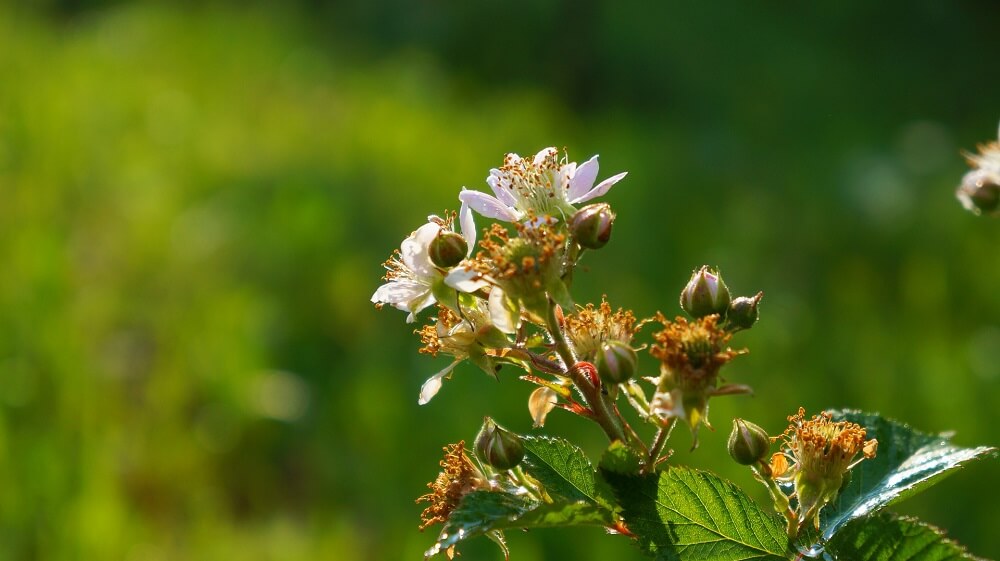All of the blackberry seedlings that we sell are a result of vegetative reproduction, which process we conduct in modern gardening tunnels. Thanks to the possibility it gives us – to extract young plantlets starting early spring-we always have fresh material to root (despite the immense work load it requires, especially at the very beginning).
The plants we offer have all an excellent, well developed root system and branching; both are a result of stem trimming- multiply times during the production time.
Another benefit is the fact that the plants are quite low which makes their transportation that much easier. We offer annual seedlings in P9 plant pots, biennial seedlings in C1,5 plant pots and perennials in C3 plant pots. Biennials are the most frequently sold.

The price per unit depends on several factors. The type selected, the age and the amount of seedlings ordered- all of these factors are just as important. When ordering wholesale quantities, it is possible to negotiate the price.
Additionally, each client can count on our professional advice that we gladly offer throughout the entire sales process.
Blackberry types
| Name | Florescence | Harvest/Yielding | Frost-resistance | Disease-resistance | Variety/Type | Fruit |
| Black Satin | early | high | high | relatively high | for desserts | round, dark blue to black color, very aromatic, sharp but tasty |
| Loch Ness | average | very high | very high | relatively high | for desserts | very large, firm, very tasty |
| Triple Crown | early | exceptionally high | high | high | for desserts | very large, juicy, tart- sweet taste |
| Gaj | early | high | high | average | for processing, for desserts | large, oval, black, tasty |
| Polar | early | high | high | relatively high | for processing, for desserts | very large, elliptic, very juicy, tasty |
1. Black Satin
This thornless variety has been created not long ago in the United States. Black Satin is unusually frost- and cold- resistant. This plant grows as an erect shrub, up to 120 cm. It grows quite rapidly and does not require a pollinator to bear fruit. It blooms in June and during that time, the shrub is covered with tiny but very decorative, white flowers. The shrub blooms for the first time two years after it is planted. The fruit of the Black Satin blackberry is quite round in shape and very proportionate. The color is very dark blue to black and the scent quite intensive. The fruit is tasty, sweet, distinctively slightly sour, a bit sharp; it is fully ripe mid- August. It can be eaten fresh, directly, but it is also excellent processed- for instance in the form of juice or tincture. The Black Satin can be picked mechanically; the growth process and care are relatively simple, mainly needing sufficient sun exposure.
2. Loch Ness
Thornless, created in Scotland- just like the name indicates it. It is characterized by an exceptional frost- resistance as well as resilience to all typical for these blackberry types diseases. The Loch Ness blackberry shrub is quite impressive in height and the branching is tight. The fruit of the Loch Ness blackberry is very tasty, quite large (even up to 5g per berry), firm, black and shiny. The fruit is usually ripe and ready to be picked at the beginning of August and all the way up until the first frost. The shrubs will not bear fruit in a regular manner and they wonʼt ripen evenly, which is the reason why hand picking is recommended.The Lock Ness blackberry is high yielding: one bush might give you anywhere between 6 kg and 10 kg of incredibly juicy blackberries.
It is best when eaten fresh but is also excellent when processed for all sorts of preserves: juice, jams etc. These blackberries will look impressive as part of dessert but a blackberry tincture is what will steal the show.
This variety does well with transportation and prolonged storage. The Loch Ness blackberry simply makes the season last longer!
3. Triple Crown
This thornless blackberry hails from America. This variety is exceptionally frost-resistant and very high- yielding, which is why it often needs some support system.
The shrub grows strong and is much branched; the stems are stiff and grow upwards with the ends slightly falling down. The bush can grown up to 150 m. The fruit is large and of an intense black color, the peel- glossy; will ripen relatively early considering the regular time for blackberries- at the cusp of July and August.
The Triple Crown blackberry can bear fruit for up to five weeks- which is quite a long time. Thanks to the fact that it is also high yielding, one bush can give you anywhere from 6 kg up to 10 kg of blackberries. The fruit ripens evenly which allows for mechanical picking (but it can still be picked by hand as well!).
These blackberries are great both eaten fresh and processed. The Triple Crown is easy to cultivate but needs sufficient sun exposure. It is worth remembering about canes- for support- but that is essential in case of any biennial plant.
4. Gaj
The Gaj blackberry was created in the Polish town of Brzezna, and to be more precise: at the Agricultural Experiment Station in Brzezna, Poland. This variety is quite frost- and fungus- resistant, however not that resilient when it comes to viral diseases. The shrub of the Gaj blackberry is erect and strong- growing; the intensity of the stem growth each year is average. The biennial stems are very long and thick and the fruit bearing ones- short. The side stems are placed evenly throughout the entire shrub. The fruit of the Gaj blackberry is relatively large, very dark or black, egg- shaped and narrow. The taste is distinctive- in a positive sense. The fruit ripens from the end of July until mid- September. The fruit can stay on the shrub quite long, and what is worth noting- will not rot or deform. These blackberries are perfect both eaten fresh and processed.
5. Polar
This Polish blackberry was created at the Botanical Institute of the Agricultural Experiment Station in Brzezna, Poland. The Polar blackberry is frost- resistant and high yielding; very easy to cultivate. The Polar blackberry grows strong and as an exception among these plant varieties- it does not create any root offshoots. It is thornless, slightly bent in shape, ideal for a family garden- which does not mean that it cannot be cultivated for produce- it is high yielding after all. The shape of the fruit is elliptic, elongated, the peel- glossy, the color- black, the taste- absolutely delicious. The fruit ripens on the cusp of July and August, which means it would bear fruit as one of the first on the market. The fruit is high in quality so it can be enjoyed fresh or processed. The Polar blackberry does well with transportation and prolonged storage.
Morphology of the blackberry
Blackberry is a popular plant of the Rosaceae family; it may take shape of a herbaceous plant but more often than not- it is a shrub plant. The stems are limber, arch- like, easily shaped around or on a fence. The blackberry bush will do just fine even without any support system or canes- it will simply grow on the ground and neither the blooming nor the fruiting will be affected in any way. Certain varieties may have stiff stems growing upwards which will allow for shaping a loosely branched, widely spread bush. If pressed against the ground, the plant will quickly grow new roots and numerous new stems. Usually a blackberry bush features thorns, spread evenly throughout the entire shrub. The plant grows in a manner similar to a raspberry- through underground offshoots – the only difference being- they are not as numerous and strong as in case of a raspberry. Blackberry leaves are palmately compound leaves with leaflets. The plant is rather seasonal but can also be evergreen. The shoots usually have numerous prickles that are often called thorns.


The flowers are dioecious, insect- pollinated, scent- free, usually white or pinkish with numerous stamens. The blackberry fruit is an aggregate fruit, composed of small drupelets, connected with a receptacle. The shape and the size resemble a raspberry. The color of the blackberry is dark purple to black. The taste can be sweet to sweet- tart to tart, depending on the variety. Both the color and the scent are rather distinctive which makes it almost impossible to mistake it for any other fruit.